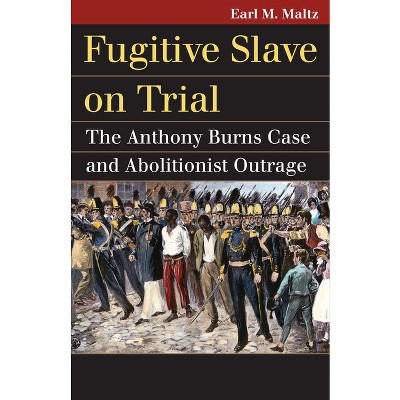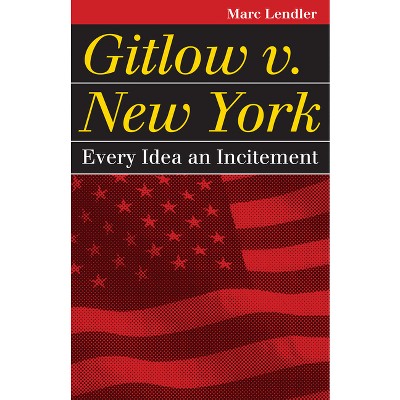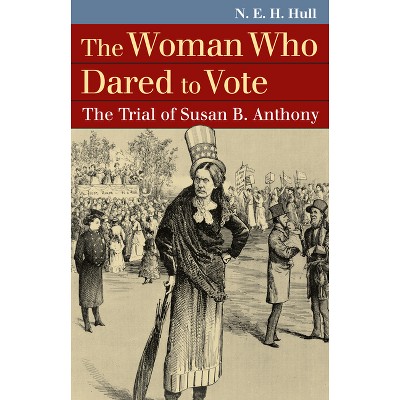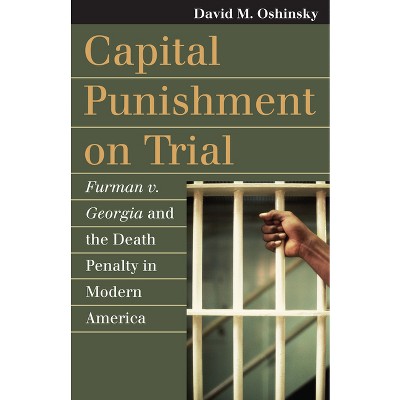Sponsored

The Detroit School Busing Case - (Landmark Law Cases & American Society) by Joyce A Baugh (Hardcover)
In Stock
Sponsored
About this item
Highlights
- In the wake of Brown v. Board of Education, racial equality in American public education appeared to have a bright future.
- Author(s): Joyce A Baugh
- 248 Pages
- Freedom + Security / Law Enforcement, Legal History
- Series Name: Landmark Law Cases & American Society
Description
About the Book
The only book-length analysis of Milliken v. Bradley, the first major desegregation case to originate outside the South. Reveals how the Supreme Court's decision undercut efforts to desegregate metropolitan public school systems, especially in the North, and how its negative effects on public education have endured.Book Synopsis
In the wake of Brown v. Board of Education, racial equality in American public education appeared to have a bright future. But, for many, that brightness dimmed considerably following the Supreme Court's landmark decision in Milliken v. Bradley (1974). While the literature on Brown is voluminous, Joyce Baugh's measured and insightful study offers the only available book-length analysis of Milliken, the first major desegregation case to originate outside the South. As Baugh chronicles, when the city of Detroit sought to address school segregation by busing white students to black schools, a Michigan statute signed by Gov. William Milliken overruled the plan. In response, the NAACP sued the state on behalf of Ronald Bradley and other affected parents. The federal district court sided with the plaintiffs and ordered the city and state to devise a "metropolitan" plan that crossed city lines into the suburbs and encompassed a total of fifty-four school districts. The state, however, appealed that decision all the way to the Supreme Court. In its controversial 5-4 decision, the Court's new conservative majority ruled that, since there was no evidence that the suburban school districts had deliberately engaged in a policy of segregation, the lower court's remedy was "wholly impermissible" and not justified by Brown--which the Court said could only address de jure, not de facto segregation. While the Court's majority expressed concern that the district court's remedy threatened the sanctity of local control over schools, the minority contended that the decision would allow residential segregation to be used as a valid excuse for school segregation. To reconstruct the proceedings and give all claims a fair hearing, Baugh interviewed lawyers representing both sides in the case, as well as the federal district judge who eventually closed the litigation; plumbed the papers of Justices Blackmun, Brennan, Douglas, and Marshall; talked with the main reporter who covered the case; and researched the NAACP files on Milliken. What emerges is a detailed account of how and why Milliken came about, as well as its impact on the Court's school-desegregation jurisprudence and on public education in American cities.Review Quotes
"Baugh's current work is distinctive for its in-depth analyses of school segregation in the North. The author details arguments for both sides and shows how the new Nixon majority on the early 1970s Supreme Court ruled in favor of upholding the unique brand of unintentional school segregation in many Northern cities. This book is replete with analysis of both the socioeconomic and the legal issues involved, and is thus recommended for students, scholars, and researchers."--Library Journal
"A cogent introduction to the topic of school desegregation efforts for students and lay readers, the primary audience for the book. The focus is on Detroit, but there is regular discussion of events throughout the United States allowing readers to make connections and identify larger currents. In addition it provides insight into complex multi-party litigation and the workings of the federal court system. The reader is able to understand the decision-making environment of the trial court judge grappling with the complex facts and myriad details in creating a remedy to a constitutional violation. Furthermore, the reader will have a better understanding of the dynamics of decision-making by the U.S. Supreme Court."--Law and Politics Book Review
"The possible audience for this book is not limited to judicial scholars but extends to the general public and students. In fact, the book would be a great supplement in an undergraduate course that covers school desegregation."--American Review of Politics
"An important book on the most important school desegregation case since Brown v. Board of Education. . . . Full of riveting descriptions of the Supreme Court Justices' internal deliberations, the Nixon administration's maneuverings, and a contemporary political context that included anti-busing riots in Boston and growing demands from 'liberal' northern congressmen for a constitutional amendment to bar busing."--Michael J. Klarman, professor at Harvard Law School and author of the Bancroft-Prize winning From Jim Crow to Civil Rights
"An excellent and well-written study that does a superb job illuminating the issues surrounding this case."--Davison M. Douglas, author of Jim Crow Moves North: The Battle over Northern School Segregation, 1865-1954











